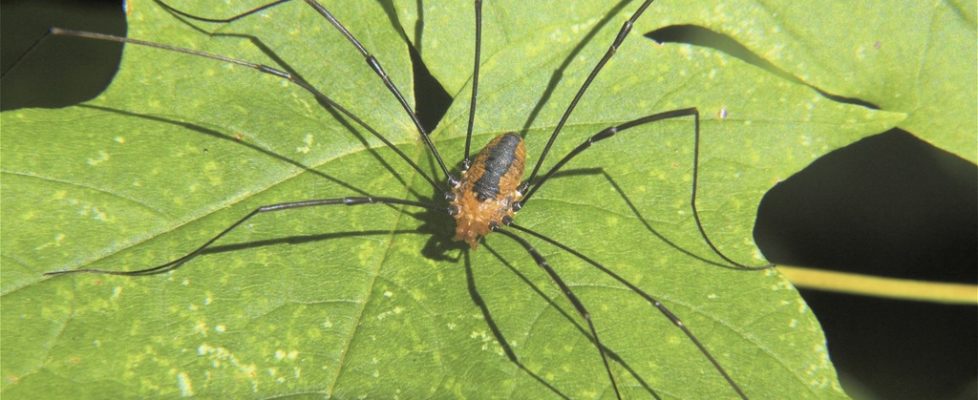Taking a Closer Look
For an avid birder, springtime is an endless series of surprises, a holiday that goes on for weeks. Midsummer is something different: It has its rewards, to be sure (favorite species singing on territory, newly fledged nestlings making their first ragged, tailless appearances), but mostly the element of surprise is gone.
Yet of course that doesn’t mean there’s nothing else to see out there. Every year, as spring turns to summer, I relearn the same lesson: To look closer. To pay attention to the smaller, subtler wonders that fill our forests once migrating birds aren’t capturing all my attention.
That lesson was driven home to me during a recent walk in the SMRA’s Brinton Brook Sanctuary. Fortunately, I had two excellent teachers: My observant wife, Sharon, and iNaturalist, an app that helps us identify much of what we see.
Together, we spotted and identified an extraordinary variety of smaller creatures and native plants. And, as a bonus, we learned their often colorful names and fascinating backstories.
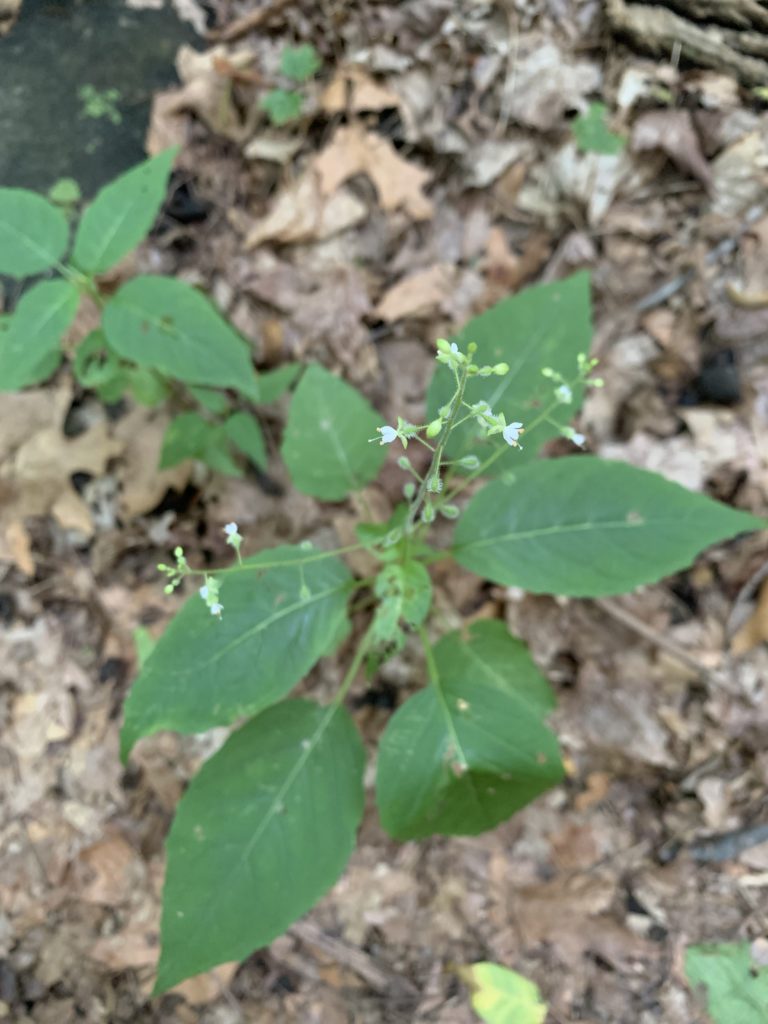
Photo: Joe Wallace
For example, during previous walks, we might have missed a little plant with tiny white flowers we saw along the trail. We definitely wouldn’t have known that it has been given the grand common name of Broadleaf Enchanter’s Nightshade. (Its scientific name, Circaea lutetiana, taken from the Greek goddess Circe, is equally evocative.)
Further down the trail, the small plant with clusters of yellow flowers has a less enchanting name: Spotted St. John’s Wort. However, this plant (named after the patron saint of hospitals and the sick) stands out in another way: It’s part of a family that has long featured notably in the apothecary of medicinal plants. Over centuries, it has been used in various forms to treat everything from infections to premenstrual syndrome to depression.
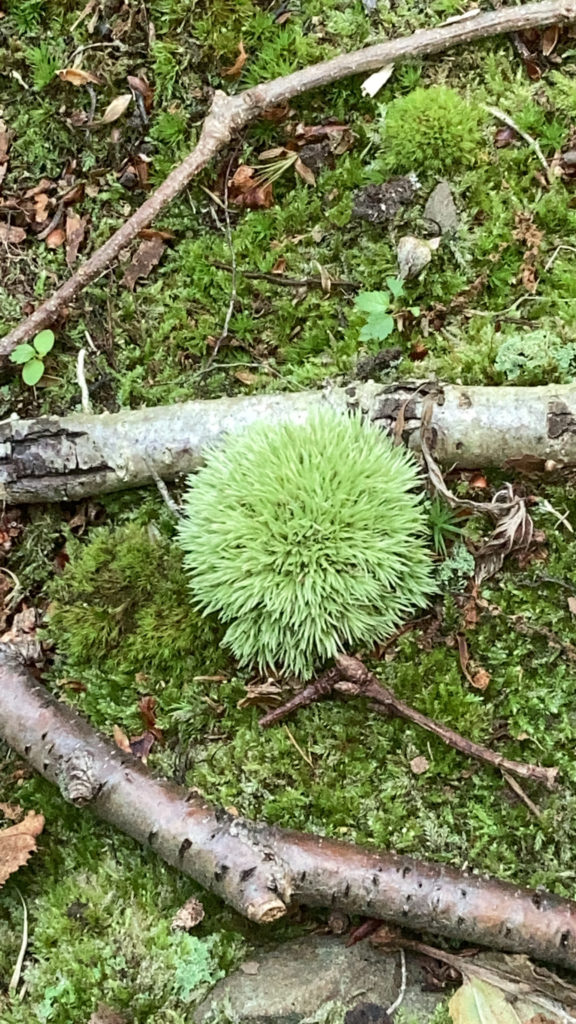
Next we found a little round moss that resembled a bright-green hedgehog. It was a young Pincushion Moss (mature specimens can span two feet or more), a species that thrives in the moist soil that characterizes so much of Brinton Brook’s lowlands.
Pincushion Moss, we found out, is also called “Mother-in-Law Moss” (Apologies to mother-in-laws everywhere.) A large one, while looking like a cushy place to sit, conceals a secret: The outermost layer of cells on its leaves contain tiny air pockets when they’re dry…but function as sponges when the air gets moist. Thus anyone who sits on one will end up with a wet rear, a concept that those who might not want to offer hospitality to their spouse’s parent may appreciate.
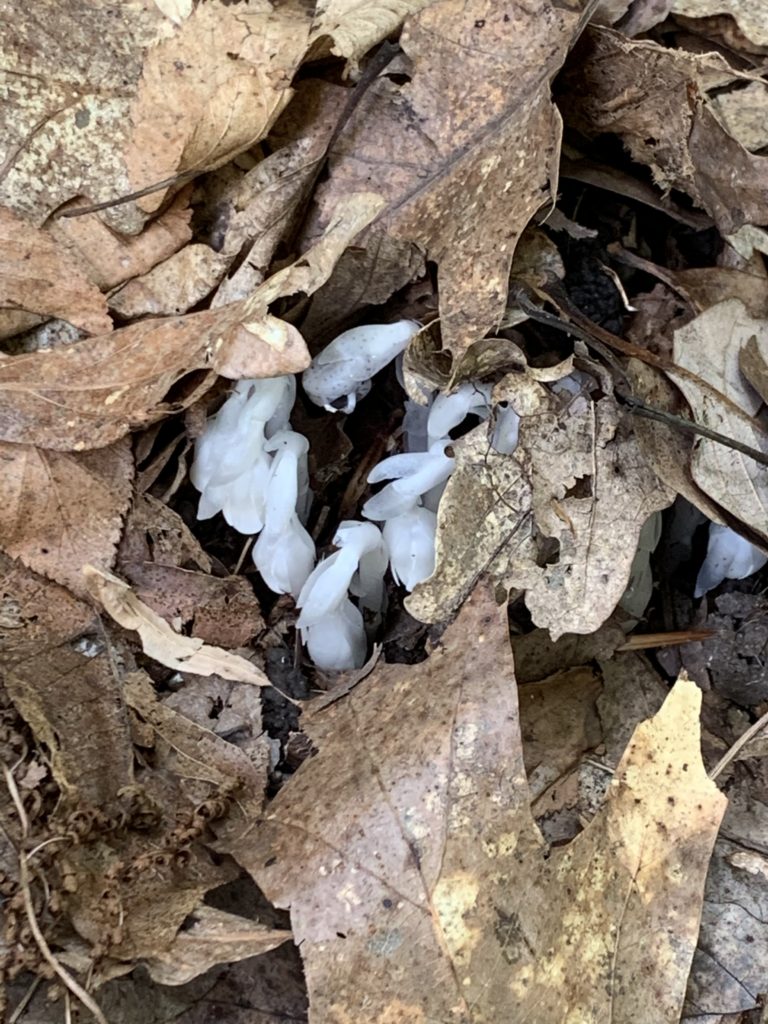
Further down the path, we saw a glimmer of white emerging from the leaf litter: a newly sprouting patch of the ghost-white Indian Pipe (Monotropa uniflora), Also known as the corpse plant, Indian Pipe (a member of the family Ericaceae and therefore a relative of blueberries and rhododendrons) harbors yet another surprising story of evolutionary adaptation.
Chlorophyll, which tints most leaves green, is essential to nearly all plants’ existence, allowing them to convert sunlight into energy. But as its ghostly appearance reveals, the Indian Pipe does not contain chlorophyll. It doesn’t need even a single ray of sun to survive. Instead, it draws its sustenance from a host.
Indian Pipes are known as mycoheterotrophs, one of a category of plants that parasitize fungi. In this case, their hosts are fungi that themselves parasitize trees. Thus, even though it contains no chlorophyll, the Indian Pipe does get its energy, twice removed, from photosynthesis.
While plants made up many of the highlights of our recent hike, other living creatures sometimes grabbed our attention as well. And again, those smaller treasures often enlightened us with life stories we couldn’t have predicted.
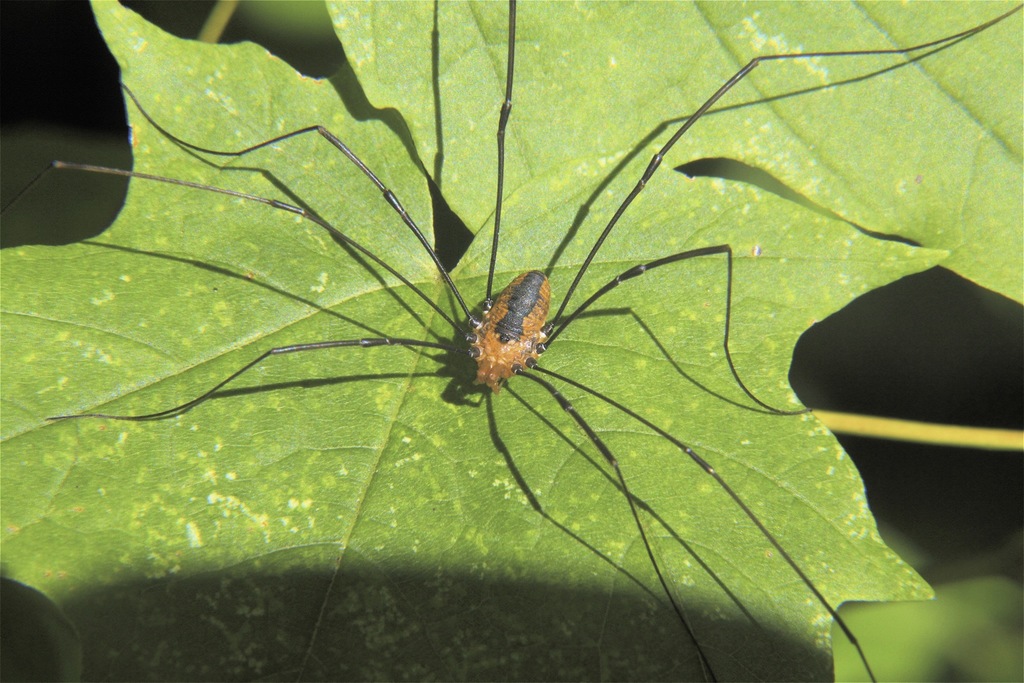
For example, that familiar little creature many of us refer to as a Daddy Longlegs? It’s an arachnid (though not a spider), more accurately called the Eastern Harvestman, whose appendages serve as unusual aids to survival. The second set of legs, for example, has evolved to serve as antennae or feelers, something that can be easily seen if you watch a Harvestman tapping them as it strides forward.
The non-antennae legs can have a more surprising purpose: If threatened by a predator, a Harvestman can detach one and leave it behind. The detached limb can continue to twitch for many minutes, presumably distracting the predator—much as a lizard’s dropped tail does—while the Harvestman escapes. (The missing leg cannot regrow, however, so detaching one must be a last resort for a Harvestman.)
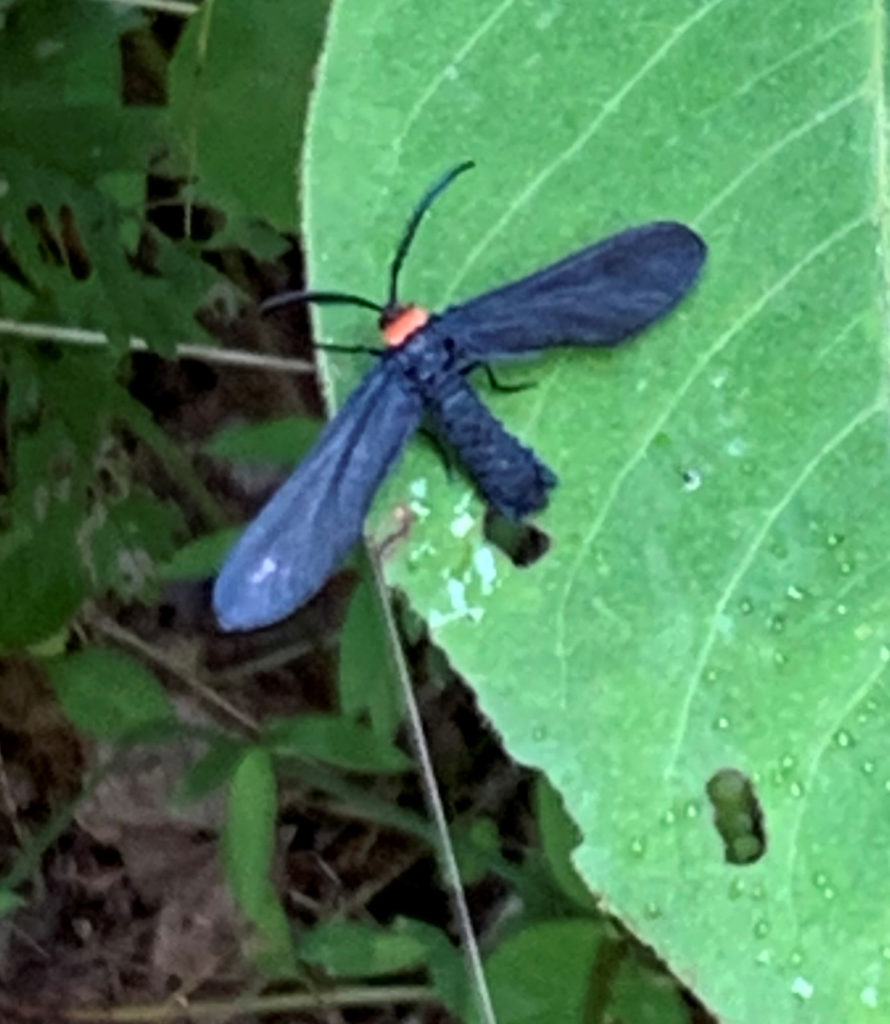
Photo: Joe Wallace
And what on earth was that perched insect that at first glance looked like a firefly…but whose wings were angled like a fighter jet’s? As usual, iNaturalist was there to help: It was a Grapeleaf Skeletonizer Moth.
(By the way, the moth shares something else with fireflies than pattern: In both species, the red color around the head announces that the insect is toxic, warning predators to stay away. In the moth’s case, the toxin is extremely potent hydrocyanic acid that is released from glands on the moth’s head.)
As their name indicates, the larvae of the Grapeleaf Skeletonizer specialize in eating the leaves of plants in the grape family, around here especially the Virginia Creeper. But they don’t eat all the way through a leaf, focusing on the outer layers of cells. The result isn’t a leaf with missing parts, but one that has been “skeletonized,” leaving only a curling, dying latticework behind.
These species are only a small portion of what we saw on that single hike, and a tiny percentage of what we didn’t see. And another walk a week later, or a month, would reveal yet another myriad of the small, vivid, fascinating plants and animals that make up Brinton Brook’s woods…and every local patch of forest during the rich weeks of summer.
Joseph Wallace. Copyright © 2020
